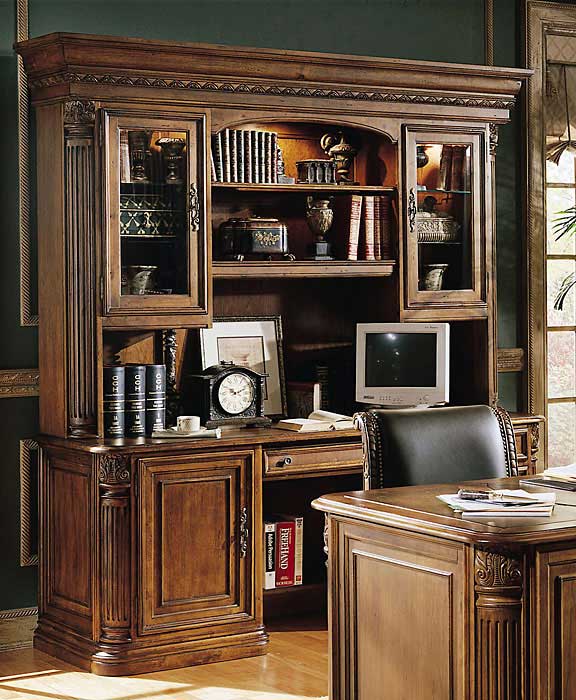Question
I am doing an office and am going to need to match the color below. I know it is hard to do from a picture, but I’m wondering if anyone could give a stab at a possible finish schedule for this. The wood is knotty cherry and the finish is a 5% precat. It looks like a glaze will be involved and stain. Does it look like toner as well?

Forum Responses
(Finishing Forum)
From contributor J:
I would try a spray stain, sealer, glaze or possibly a tinted topcoat. Does your finish supplier offer matching services?
Equalizing stain: raw sienna dye stain
Washcoat with 3% solids content by volume
Scuff 320
Wiping stain: burnt umber
Washcoat with 3% solids content by volume
Glaze with burnt umber darkened with black
Seal glaze
If you want to tone, do it with a burnt umber pigmented toner topcoat.
There are many ways to get this look. Some of them have more steps, some less. For example, if you want to do some strike-outs then you will probably need to also do the toner coat. Selectively removing stain/color on the cathedral grain patterns (strike-outs) adds "value" and depth to the look (so does glazing, definitely).
Every step you do is money lost unless you already have samples to show your customers. Price up-charges for the more involved samples (those which require more steps), and their understanding of the extra steps they are paying for to get the "better" more sophisticated looks.
This is the value of step boards - they become tools for you to do the work which lets you look your best and still make money at it.
Read the following article on "Tinting Toners" (follow the link at the end of this post). If you use a dye toner as your equalizing stain (applied by spray) then you put it on so that it does not puddle. It is to go on and evaporate within a few seconds. While being transparent, applied in this manner the dye stain/toner still tends to even out the color. Notice that I said that it "tends" to even out the color. It doesn't make the color even the way a painted out stain would, but it "tends" to get everything within a better color standard so that you can then continue developing your color on top of that.